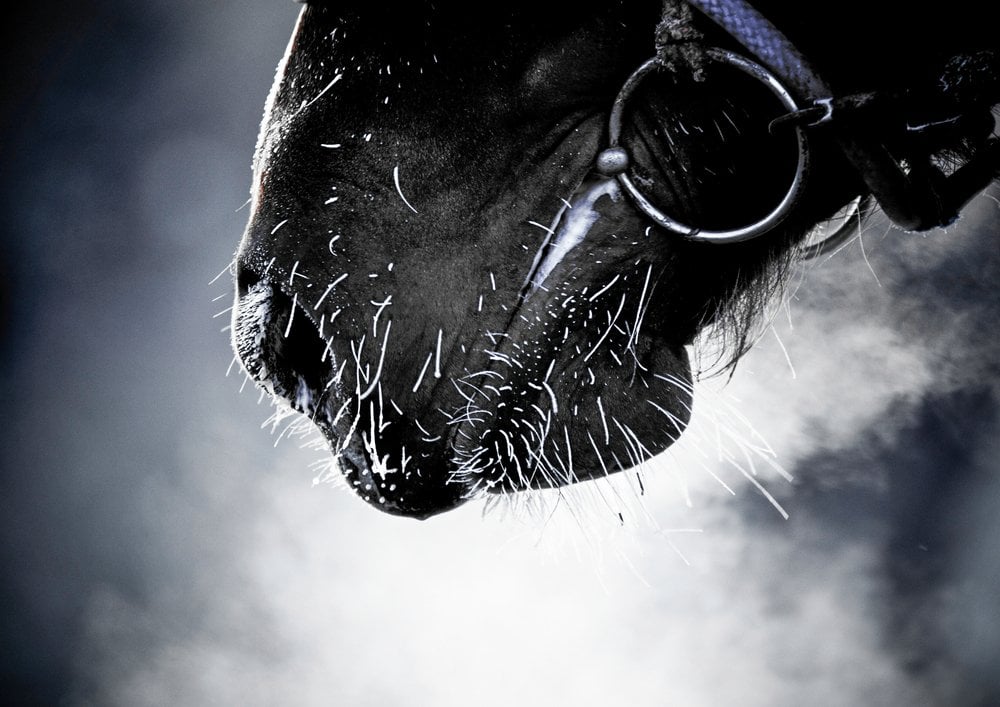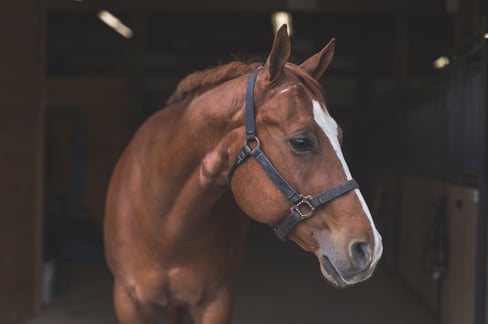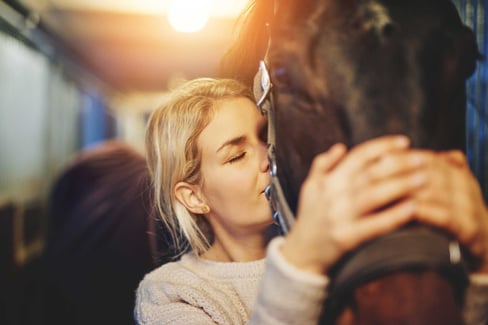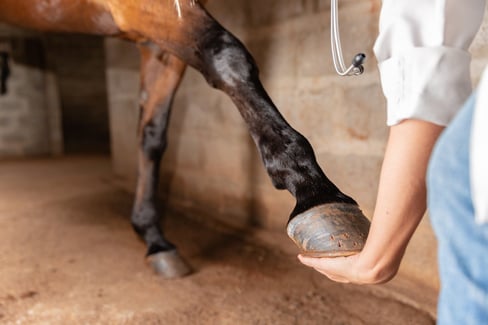Table of Contents
According to an article by The Horse, 60% of lameness in horses is related to equine osteoarthritis. We’re all likely familiar with what osteoarthritis is, and how it affects our horse’s overall mobility and quality of life. However, what we often forget is that equine osteoarthritis can be alleviated and prevented with regular, non-strenuous movement. For example, walking, grazing and stretching. Given that we typically stable our horses in stalls, they may not have the opportunity to move as regularly as they should.
Prolonged periods of immobility can further predispose your horse to equine arthritis, along with the related stiffness and risk of injury. Perhaps even you have experienced greater stiffness during the damp and cold periods from late Fall to early Spring. Moreover, cold temperatures and fluctuating weather patterns may make it difficult to regularly exercise or turn-out your horse. However, there are a few considerations that can improve equine mobility and keep your horse comfortable, happy, and performing well this winter. Keep reading to discover four tips to promote horse joint health and equine mobility.
Stretching & Movement
First and foremost, walking and turn-out is the best thing to maintain mobility and promote horse joint health. However, everyone’s situation is different. If turn-out isn’t an option, using a walker, hand-walking, or doing some light lunging during the winter months can increase the opportunity for your horse to stretch and keep their joints active and lubricated. Along with providing increased stimuli for your horse, natural movement through turn-out or walking can help alleviate stiffness, promote lymphatic drainage and improve circulation.
Spend Some Extra Time to Warm Up
Since our horses are usually less active in the colder months and are more prone to stiffness, allocating a few extra minutes to warming up can do wonders in ensuring your horse is both physically and mentally prepared to work. Just like us, horses require extra time in colder temperatures to warm-up and achieve adequate circulation before performing physical, strenuous work. Not only will you give your horse a better chance of performing well under saddle, but you’ll also decrease the risk of injury and tissue damage caused by exerting cold, tight muscles and joints.
Supplementation & Diet
Another consideration to keep in mind when the weather changes is your horse’s diet and equine supplement regime. Since your horse is likely not eating grass over the winter, do they need anything added to their diet to compensate? If your horse is a hard keeper or lives outside, he or she may need more hay and feed to compensate for having to keep warm during the winter months. Equine joint support supplements also play a vital role year round, but especially in the winter to help ward off stiffness and joint inflammation caused by stabling, lower mobility, and physical training.
Alternative Therapies
Many alternative therapies have become available for horses over the past years and many show promise in helping to enhance performance and alleviate the symptoms of equine osteoarthritis, like soreness and discomfort. A few noteworthy alternative therapies that are backed by significant scientific research include equine massage therapy, acupuncture, chiropractic, pulsed electro-magnetic therapy (PEMF), and light/ laser therapy. Consult your veterinarian and do your own research to determine which therapies may be best suited for your horse.
The winter time is a challenging period for both horses and their riders. Hopefully these quick tips have given you the opportunity to brainstorm on ways to promote your horse’s well-being and comfort during the coldest and shortest days of the year!
Until next time, happy riding!
Newsletter Signup
Subscribe to our newsletter to receive the latest news and exclusive offers.
.jpg?height=2000&name=Cliick_Integricare-DISPLAY-REVISEDV2%20(1).jpg)
Proactive & Therapeutic Joint Supplements
When given daily, Integricare joint supplements recover bone and joint injuries faster and help prevent mobility injuries from happening in the first place.











